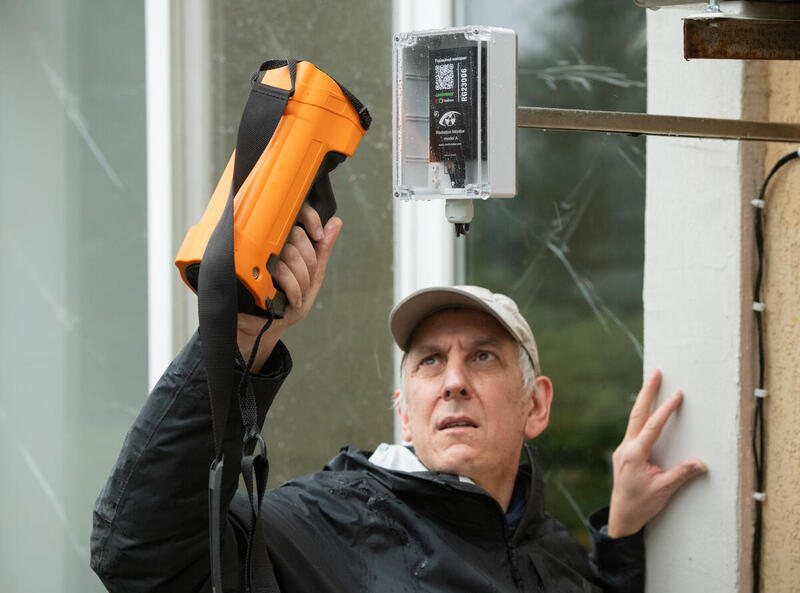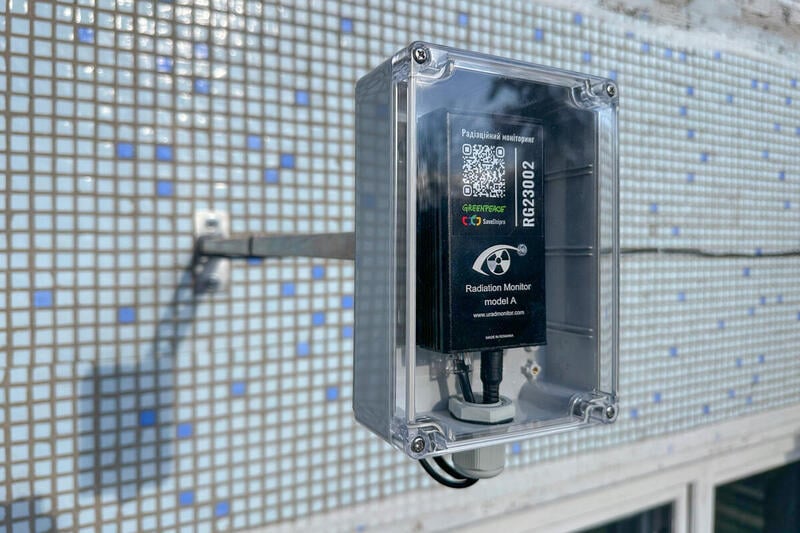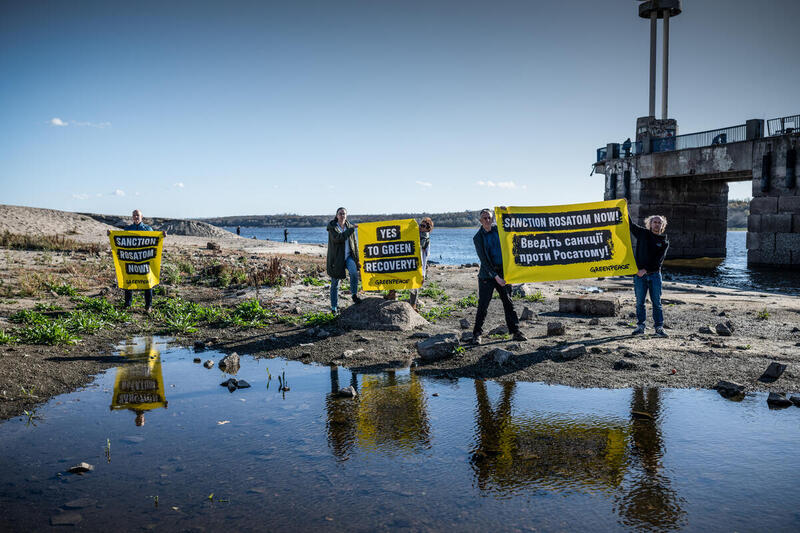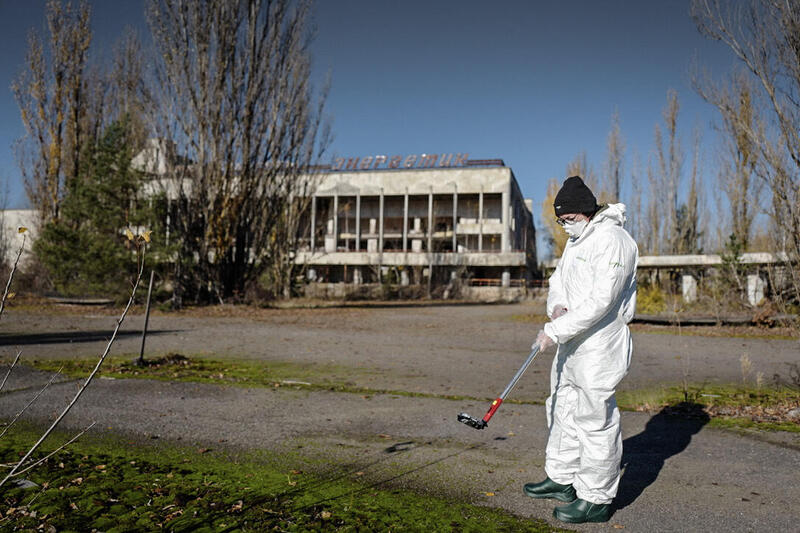Monitoring radiation and the situation around Zaporizhzhia NPP
Since the Russian occupation of the Zaporizhzhia NPP, Greenpeace has been at the forefront of independent investigations about the safety and security hazards that Russia’s illegal attack and occupation of Ukraine’s largest nuclear power plant has been causing. In addition, we are also campaigning for sanctions against Rosatom.


Problem
As Russians occupied Zaporizhzhia nuclear power plant, they started violating safety and security protocols. In addition, the prospect of deliberate radioactive contamination also increased following the destruction of the Nova Kakhovka dam in June 2023. The emergency response and safety management procedures are no longer functioning. The International Atomic Energy Agency (IAEA) inspectors on site provide very limited information. The threat of further destructive actions and environmental war crimes by Russian forces, coupled with the ever-present risk of electricity supply loss, places the entire region, as well as the whole Ukraine and potentially neighboring countries, at risk.
Our work
In response to the risk of a major catastrophic contamination from Ukrainian nuclear power plants, in partnership with environmental group SaveDnipro, Greenpeace deployed multiple radiation sensors to monitor and provide vital information on radiation levels in the event of a severe radioactive release.
Greenpeace Central and Eastern Europe also urges immediate EU sanctions against Rosatom as the risk of a nuclear disaster increases due to the Russian war against Ukraine.

The radiation sensors installed by Greenpeace and SaveDnipro on schools, hospitals and nuclear sites in southern Ukraine, aim to provide early warnings of increasing gamma radiation in case another nuclear disaster happens in Ukraine. The sensors provide real-time radiation level data via an online map called SaveEcoBot. They have been strategically placed in Zaporizhzhia City, Yuzhnoukrainsk, Odesa, Tarutyne, Yuzhne, and Uman. They have been installed in agreement with regional Ukrainian authorities responsible for nuclear emergency planning.

Research and reports
Even before Russian armed forces attacked the Zaporizhzhia nuclear plant, Greenpeace analysis was published highlighting major risks from Russian occupation. Since March 2022 Greenpeace has published multiple assessments on the safety and security hazards at the Zaporizhzhia nuclear plant.
We worked together with former UK military intelligence analysts to investigate and expose Russian military operations at and near the nuclear plant.
We continue to challenge the International Atomic Energy Agency (IAEA) and demand it to report on the true scale of Russian violations of nuclear safety and security principles.
We demand sanctions against Rosatom. We exposed that the nuclear trade between Russia and its European partners, particularly France and Hungary, is still ongoing. After more than two years since Rosatom occupied the Zaporizhzhia nuclear plant, Rosatom, the Russian state owned nuclear corporation, still remains largely unpunished.
